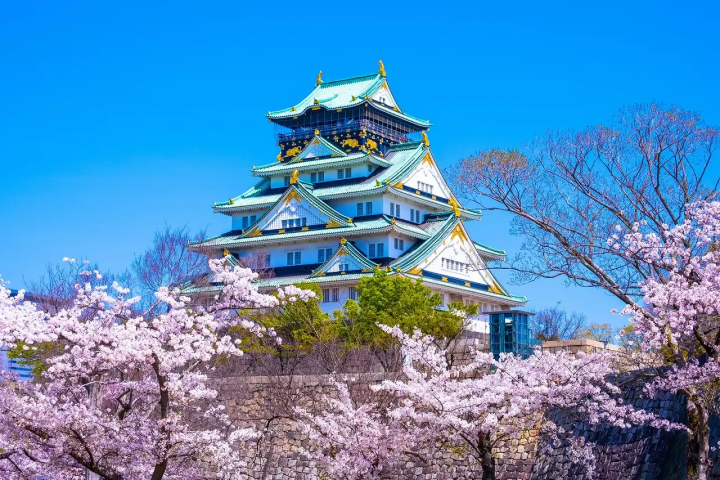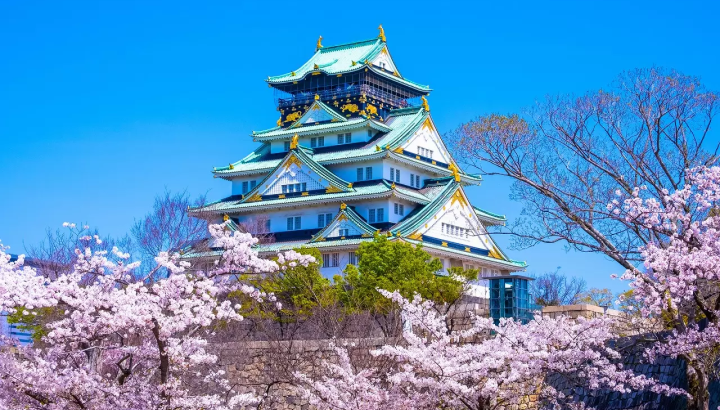
Rising above the skyline of modern Osaka, surrounded by stone walls, wide moats, and blossoming cherry trees, stands one of Japan’s most iconic and historically significant landmarks — Osaka Castle. A masterpiece of feudal Japanese architecture, this 16th-century stronghold tells the tale of ambition, war, peace, and national unity. Whether you’re an avid historian, a cultural traveler, or a casual explorer, touring Osaka Castle is an immersive journey into the heart of Japan’s samurai era, brought vividly to life by its grandeur, surroundings, and stories.
The Symbol of Osaka and the Legacy of a Unifier
Osaka Castle was originally commissioned in 1583 by Toyotomi Hideyoshi, one of Japan’s three great unifiers during the tumultuous Sengoku period — a time of nearly constant civil war. After the fall of the Oda clan, Hideyoshi sought to centralize power and chose Osaka as the seat of his authority. Determined to make a statement of his dominance, he built a castle so magnificent that it rivaled Kyoto’s imperial palace.
Constructed on the ruins of the Ishiyama Hongan-ji Temple, the original castle featured soaring stone walls, gold-leaf-decorated turrets, and a multi-storied keep that loomed over the plains. It was meant not only as a military stronghold but also as a symbol of political authority, cultural refinement, and architectural innovation.
A Fortress Reborn Through Destruction and Restoration
Osaka Castle’s story is also one of resilience. Just decades after its completion, the castle was burned down during the Siege of Osaka (1614–1615), when the Tokugawa shogunate crushed the Toyotomi clan. The Tokugawa rebuilt it, but nature and war would again challenge its survival. Lightning strikes, fires, and bombings during World War II damaged the structure repeatedly.
However, with each devastation came renewal. The current main tower, restored in 1931 and fully renovated in the 1990s, is a faithful concrete reconstruction of the original. Today, it stands proud with an exterior that reflects historical authenticity and an interior transformed into a modern museum, chronicling the rich legacy of the castle and the life of Toyotomi Hideyoshi.
Exploring the Castle Grounds
The Inner Moat and Stone Walls
Before you even step inside the castle’s inner complex, you’re struck by the enormous granite stones of the outer walls — some weighing more than 100 tons. These were transported from distant quarries and arranged with astonishing precision using techniques that remain a marvel even today. The surrounding moats, both inner and outer, form elegant waterways that double as scenic reflections of the castle, particularly enchanting during the cherry blossom season.
Nishinomaru Garden
To the west of the main keep lies Nishinomaru Garden, a sprawling lawn dotted with over 600 cherry trees and offering perfect views of the castle tower. During sakura season, it becomes one of Japan’s most popular hanami (flower-viewing) spots, where picnics, music, and seasonal foods bring the centuries-old landscape to life.
The Castle Tower: Museum and Observation Deck
First Floor – Historical Foundation
Entering the main tower, visitors are greeted by multimedia exhibits detailing the rise of Toyotomi Hideyoshi. His strategic brilliance, political maneuvering, and vision for a unified Japan come alive through holograms, dioramas, and scroll reproductions. You’ll also learn about the architecture, construction methods, and defensive innovations of the original fortress.
Middle Floors – Cultural Artifacts and Samurai Legacy
The upper levels showcase original samurai armor, swords, maps, banners, and the famed golden tea utensils used by Hideyoshi, who was also a patron of the arts. These exhibits not only tell stories of warfare but also of culture — emphasizing the duality of the samurai as both warriors and aesthetes.
Top Floor – Panoramic Views of Osaka
The eighth floor opens to an observation deck offering 360-degree views of the Osaka skyline, moats, and surrounding parks. On a clear day, you can see the contrasting cityscape of modern buildings encircling the ancient stone heart of the city. It’s a surreal moment — a quiet fusion of Japan’s past and present.
Highlights Not to Miss
- Gokurakubashi Bridge: A photogenic bridge at the southwestern gate, ideal for viewing the castle reflected in the moat.
- Osakajo Gozabune Boat: Traditional-style golden boats that take visitors for a short cruise along the inner moat, offering rare views of the castle’s towering walls.
- Time Capsule Monument: A fascinating structure buried in front of the castle in 1970 during Expo ’70, intended to preserve artifacts for 5,000 years.
Seasonal Splendor Around the Castle
Osaka Castle’s surroundings offer something special every season:
- Spring: Cherry blossoms bloom in dramatic fashion, especially in Nishinomaru Garden.
- Summer: Festivals and night illuminations add vibrancy, including the Tenjin Matsuri nearby.
- Autumn: The moats reflect fiery red and orange leaves, creating a painterly scene.
- Winter: Snow dusts the castle roof, enhancing its fairytale-like aura, especially at night.
Osaka Castle Park: Nature and Culture Combined
The broader Osaka Castle Park covers over 100 hectares and is a haven for locals and tourists alike. Jogging paths, plum groves, performance stages, and open lawns make it a daily gathering place for exercise, relaxation, and cultural events. It’s not uncommon to see traditional drumming performances, martial arts demonstrations, or couples in kimono taking wedding photos.
Within the park, you’ll also find:
- Osaka Museum of History: Offers deeper context on Osaka’s evolution, with models, floor maps, and views of the castle from its upper floors.
- Hokoku Shrine: Dedicated to Toyotomi Hideyoshi, this Shinto shrine blends quiet reverence with historical significance.
- Food Stalls and Tea Houses: Try local specialties like takoyaki, okonomiyaki, or traditional matcha tea.
A Lesson in Feudal Architecture and Defense
Osaka Castle isn’t just visually striking — it was built with military genius. Strategic design features include:
- Multiple layers of moats and gates to slow invaders.
- Yagura (turrets) on corners for defense and surveillance.
- Sloped stone walls (burdock piling) that made climbing nearly impossible.
- Arrow and gun slits to defend without being exposed.
It’s a testament to Japan’s highly developed castle-building techniques, which blended engineering, aesthetics, and war strategy into seamless harmony.
Cultural Resonance and National Pride
For many Japanese people, Osaka Castle isn’t merely a tourist attraction — it’s a symbol of resilience, identity, and pride. It represents a turning point in Japan’s history when warlords battled not just for territory, but for the soul of the nation.
Today, the castle often hosts:
- Reenactments of samurai battles.
- Kimono rentals for period-style photography.
- Traditional music and dance performances, especially during national holidays.
These cultural immersions give visitors a hands-on encounter with history, not just textbook facts.
Practical Tips for Visiting
- Hours: 9:00 AM – 5:00 PM (Last entry at 4:30 PM). Hours may vary during special events.
- Admission: The park is free. Entry to the castle tower museum is usually around ¥600 (subject to change).
- Accessibility: Elevators are available inside the tower. The grounds are largely wheelchair-friendly.
- How to Get There: Easy access from Osakajokoen Station on the JR Loop Line or Tanimachi 4-chome Station via subway.
Conclusion: Where Japan’s Past and Present Meet
Touring Osaka Castle is more than just a walk through a historical site — it’s a step into the legacy of Japan itself. Every stone in its wall, every artifact in its museum, and every reflection in its moat tells a piece of the story of how modern Japan emerged from centuries of feudal strife. It is a place of beauty, history, and soul, preserved not only in architecture but in spirit.
Whether you visit in spring under a canopy of blossoms, in summer during a vibrant festival, or in winter when peace blankets the grounds in snow, Osaka Castle promises an unforgettable journey into Japan’s past, surrounded by the energy and elegance of the present.




